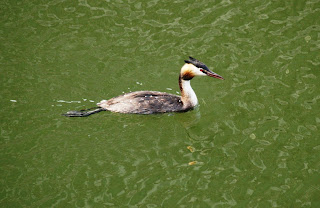In Gent (Belgium), noted Great-crested grebes (Podiceps cristatus) and their chicks near the city centre. In the Chartreuse region of SE France, recorded Alpine gentium (Gentiana nivalis), Leafy spurge (Euphorbia esula), Crown vetch (Securigera varia), Yellow alpine milk vetch (Astragalus frigidus), Grass of Parnassus (Parnassia palustris), Cornflower (Centaurea cyanaus) and Mountain everlasting (Antennaria dioica). There were also lots of bugs including Graphosoma italicum, moths namely the Hummingbird hawkmoth (Macroglossum stellatarum), butterflies with the White letter hairstreak (Strymonidia w-album) and the Duke of Burgundy fritillary (Hamearis lucina), long-horn beetles (Strangalia maculata) and the Bee beetle (Trichius fasciatus) and grasshoppers (Aiolopus thalassinus).
This blog may help people explore some of the 'hidden' issues involved in certain media treatments of environmental and scientific issues. Using personal digital images, it's also intended to emphasise seasonal (and other) changes in natural history of the Swansea (South Wales) area. The material should help participants in field-based modules and people generally interested in the natural world. The views are wholly those of the author.
Subscribe to:
Post Comments (Atom)
-
I n the UK and US, a pparently popular and successful vegan/vegetarian restaurants are reportedly closing or adding meat to their menus ( ...
-
Early ripening fruit may seem convenient but some folk think it confirms environmental stress. There's also a possibility th...

















%20mating%20NWCW.jpg)


No comments:
Post a Comment